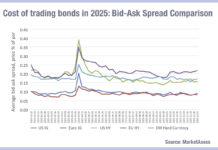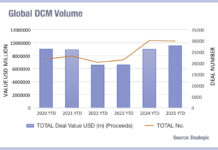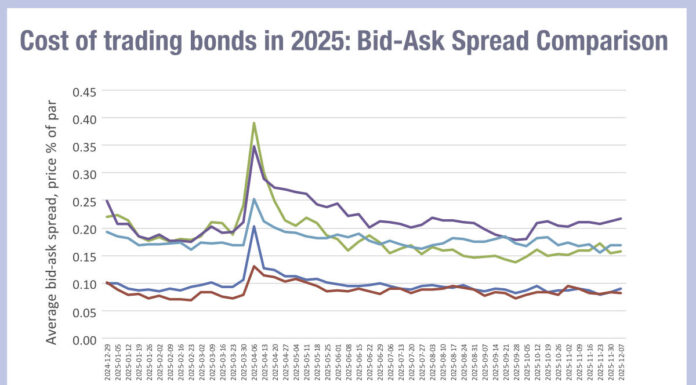 Primary markets are a crucial source of liquidity in secondary markets, as new issues trigger a round of buying and selling activity for newly issued bonds and relative value trades as the value of previously issued debt changes based on the returns offered by new bonds.
Primary markets are a crucial source of liquidity in secondary markets, as new issues trigger a round of buying and selling activity for newly issued bonds and relative value trades as the value of previously issued debt changes based on the returns offered by new bonds.
If we look at September 2025 as an example, issuance hit record levels with US$227 billion in US investment grade and US$55 billion of new US high yield bonds. At the same time, we saw a fall in trading costs and an increase in both TRACE count and volume. As primary deals are less additive of trade count – being typically larger trades – and are more additive of trade volume, this indicates secondary trading activity grew in this period.
Trade sizes have largely stayed range bound over this period, suggesting there has been no significant skew from those larger trades in September, with activity between larger and smaller trades being matched in the month.
Taking a step back, buy-side traders report that primary issuance is a friction to secondary trading on the desk, as it takes time away from the skilled activity of sourcing and pricing liquidity, and requires traders to manage the issuance process on behalf of their portfolio managers, without adding much value.
Whether a testament to their skill, the increased electronification of primary market processes or indeed the greater electronification of secondary market processes, the capacity to manage best execution in such a high pressure month as September is indicative that traders are coping more ably than ever before.
Another consideration to take into account for liquidity and its cost is the current credit spread. Spreads can reflect the investibility of an instrument or even the asset class more broadly, directly impacting appetite, therefore liquidity, therefore liquidity pricing. With spreads being incredibly tight recently, and consistently so, there would seem to have been little impact on trading activity given the notable changes in volume and trade count, or the costs of liquidity, suggesting that credit are having a limited effect on these patterns.
The one dynamic that has consistently expand over this period is the use of electronic trading. It seems evident that the faciality of e-trading has supported trading desks enough that they are able to engage in both primary and secondary markets very effectively, even under considerable pressure, while allowing market makers to support tighter bid-ask spreads.
Therefore as liquidity ebbs and flows with primary activity being a key driver, and appetite based on spreads having an indeterminate effect on market liquidity, it is fair to say electronification is having an outsized impact on the cost of liquidity in credit today.
©Markets Media Europe 2025















